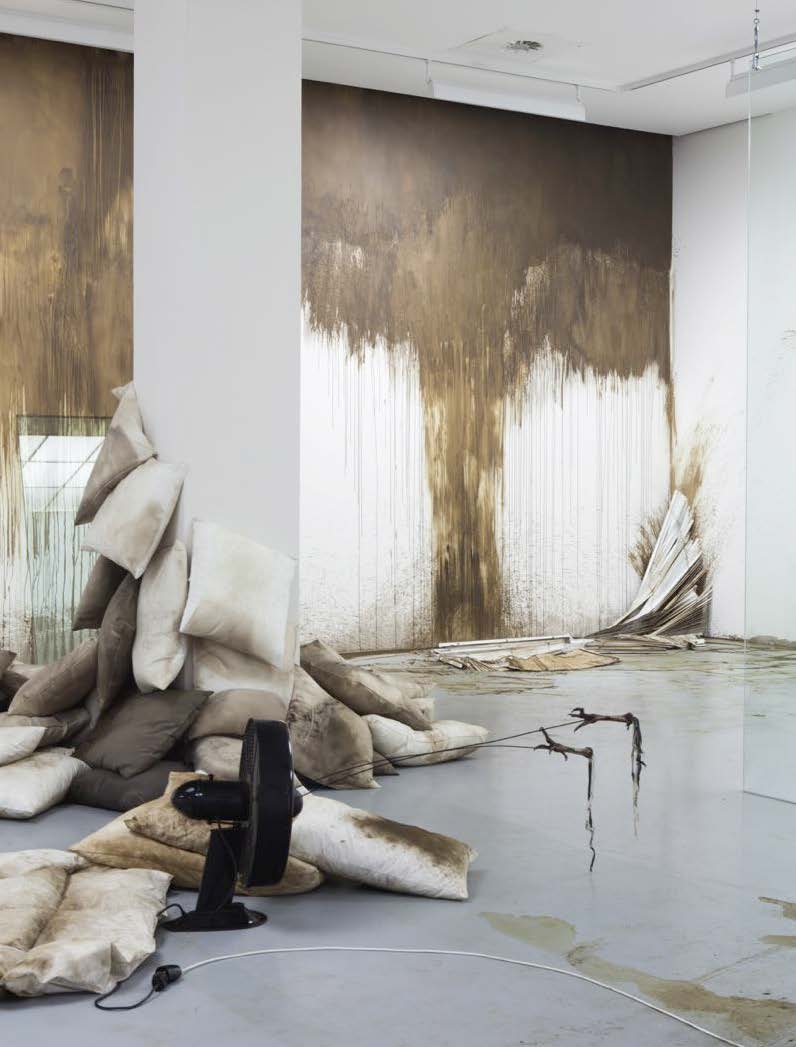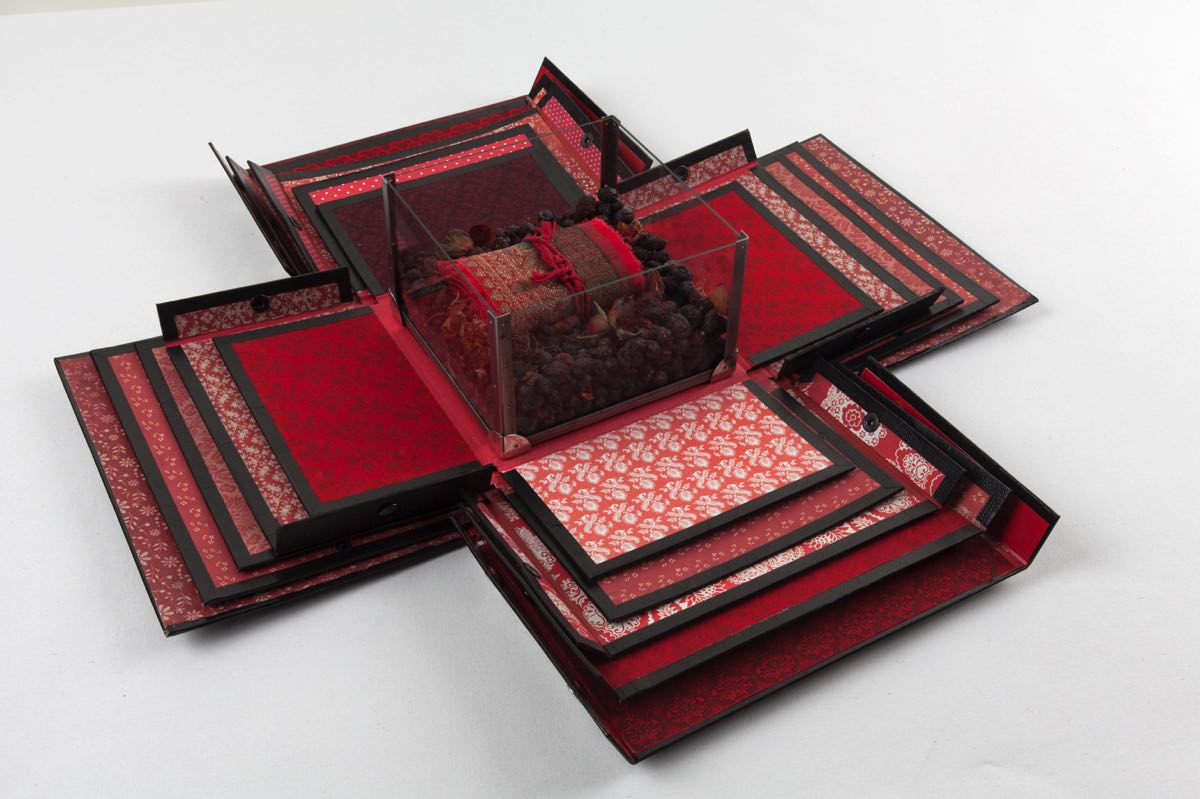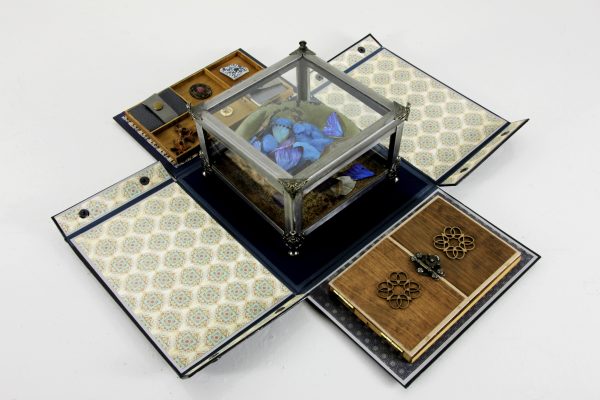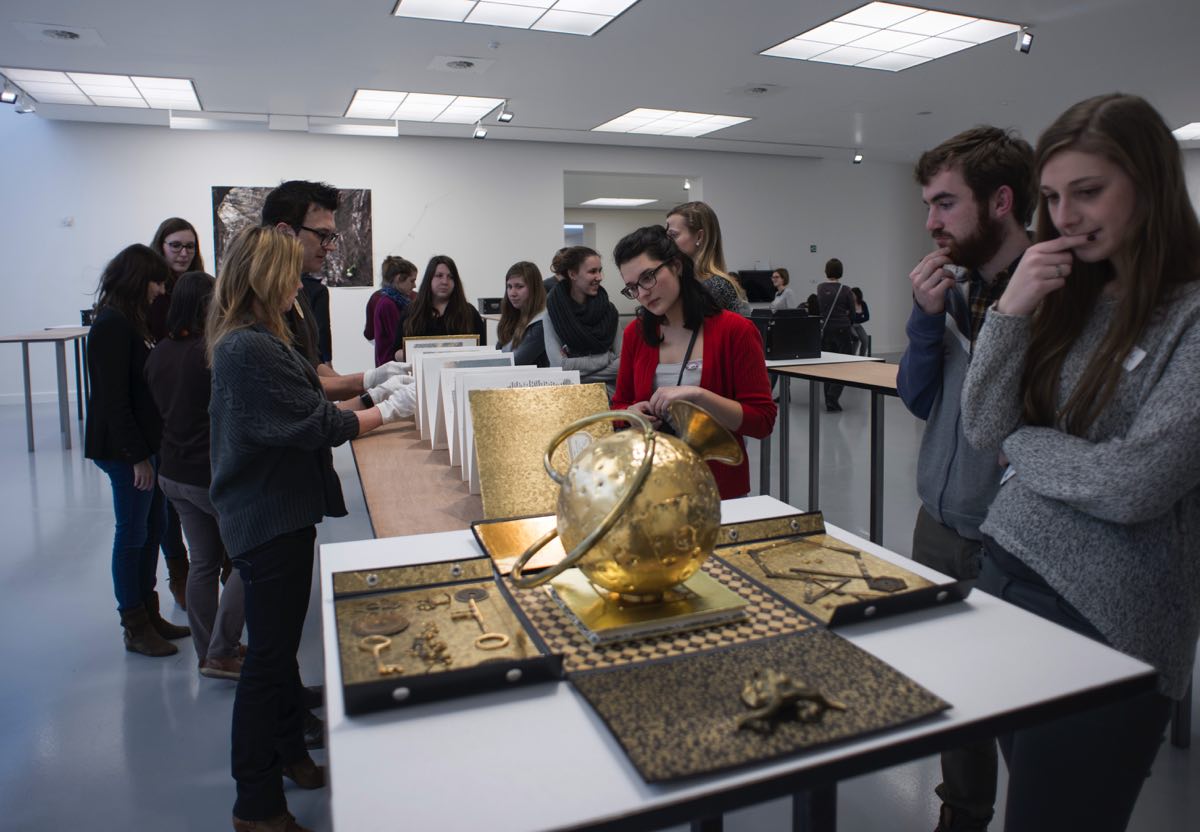「大地の精神」から-リカルド・ブレイ-
何も与えることのないという境界から生まれるものたち
何も与えることのないという境界から生まれるものたち
Ricardo Brey from the book 'THE SPIRIT OF THE EARTH'
Ricardo's works invisible shuddering, elusive even within the physical work of art itself
Ricardo's works invisible shuddering, elusive even within the physical work of art itself
 61/6/2022
61/6/2022
今回は、リカルド・ブレイというアーティストについて。
私が彼を知ったきっかけは、友人がくれた「THE SPIRIT OF THE EARTH」という展覧会の本がきっかけである。出版しているのはワタリウム美術館という現代美術館で、この展覧会のアーティストの1人が彼だった。このほかには、日本の岡本太郎、南アフリカ共和国のジャクソン・シュルングワニ。岡本太郎については、もう少し彼のことを知りたいと思ったので、彼が出している本とかを調べてみることにする。そんで一通り腑に落ちたら、ここでも書こうかなと思う。
もう少しこの展覧会の説明をしておくと、彼ら3人が選出されたのには理由がある。キューバからベルギー、日本、南アフリカと異なるバックボーンを持ちながらも、「古来の時代から世界共通にあった精神性を持ち合わせている作家たち」という共通点があることだ。そして、彼らの作品やその精神性から伝わってくるものを感じ取り、今日ますます複雑になっていく現実・現代社会の問題や日々や、どこに置いていいのか分からない価値観と向き合っていく。あるいはそのきっかけやアイデアの一片となる。というのがこの展覧会の目的らしかった。
ここでこの本で引用されている、1986年にこの世を去ったヨーゼフ・ボイスのインタビューの抜粋(1982年)をここでも紹介しておく。


リカルド・ブレイの作品からは、歴史・近未来・さまざまな物質のミクスチャーを見る。彼の作品では、その動きが物質に息を吹きかける。それであって、お互い何も生まず、何ものにも溶け込まず、何にも属さない。ディルク・ピュルタウに言わせると、「全てが動いているのに、しかも内側に存在しているのに、動きそのものは物には従属していない。私たちが命と呼ぶものと同じように目で見ることはできない。私たちが目撃できるのは、物質に、素材に、物体に、今何かが起こり通たるということだけである」。 という意味では、彼の作品は絶対に見ることができないものにかかわっている。目に見える密度のある有機的な何か・生命ではなく、ものとして作品の中にある、目に見えない震えなどといった、捉え所のないものが彼の作品の根源にはあるのだろう。物質が動く、その瞬間そのもの。だから何かに属することもしないが、人間の肉体のように物質を通して出ないと触れることはできない。その瞬間。
そして、物体そのものが内側から動きを生み出しているのではなく、それは外から吹きかけられた息のためなのである。これは、他者に帰属したいという彼の欲望でもある。それが息となって現れる。だが、表面をさらっと撫でるだけで、ものが生命を持たないことを否定したりはせず、ただ通り過ぎていく。それでもなお、生命を吹き込むことができないという無力さの中で、絶えずそれが続けられるがゆえに、いつまでもそれを切望し続けるのが、彼の作品なのだ。
彼のインタビューからは、彼の作品とのつながりを垣間見ることができる。例えばBoxesは、彼が自分の作品をボックスに収納するため、数え始め、忘れかけていた美しいピースたちを発見したことから着想を得たらしい。他にも歴史についての考え方や、アフロキューバンの文化・音楽・宗教に深く関わりがあることなど、調べてみると色々出てきた。他にも情報として、彼の作品は多くの国際機関で展示されていて、2002年以来、彼は重要な設置プロジェクト、すなわち「宇宙」、「付属書」、「火への燃料」を開発し、2015年にアントワープのMUHKAで展示された。らしい。など。
総括すると、私がリカルドについて書こうと思ったのは、彼は作品をアンチテーゼとしてではなく、ダイナミズムとして作っているところが好きだったから、である。それに、肉体・物体と、生命と言われるものとの関わりから、目には見えないもの、瞬間や、その動きの根源としてアダムの創造的なものに触れているという…おそらく西欧に住んでいなければあまりすっかり入ってこないであろう価値観とかも面白かった。というよりも、それでいて岡本太郎やジャクソン・シュルングワニたちと根底には同じものがあること(そもそも彼はコスモポリタニズム主義的なところはなきにしもあらずだけど…)が、良いなと思った。ということだ。
なんかすごくあっちこっち行く文章になってしまった気がする。とにかくウェブサイトからも、作品を結構見ることができるので、気になったら見てみるといいかもしれない。
なお、文章は少し難しい表現があったので、本から結構表現を拝借させていただきました。御免!
 リカルド・ブレイのサイト
リカルド・ブレイのサイト
2022/6/1
私が彼を知ったきっかけは、友人がくれた「THE SPIRIT OF THE EARTH」という展覧会の本がきっかけである。出版しているのはワタリウム美術館という現代美術館で、この展覧会のアーティストの1人が彼だった。このほかには、日本の岡本太郎、南アフリカ共和国のジャクソン・シュルングワニ。岡本太郎については、もう少し彼のことを知りたいと思ったので、彼が出している本とかを調べてみることにする。そんで一通り腑に落ちたら、ここでも書こうかなと思う。
もう少しこの展覧会の説明をしておくと、彼ら3人が選出されたのには理由がある。キューバからベルギー、日本、南アフリカと異なるバックボーンを持ちながらも、「古来の時代から世界共通にあった精神性を持ち合わせている作家たち」という共通点があることだ。そして、彼らの作品やその精神性から伝わってくるものを感じ取り、今日ますます複雑になっていく現実・現代社会の問題や日々や、どこに置いていいのか分からない価値観と向き合っていく。あるいはそのきっかけやアイデアの一片となる。というのがこの展覧会の目的らしかった。
ここでこの本で引用されている、1986年にこの世を去ったヨーゼフ・ボイスのインタビューの抜粋(1982年)をここでも紹介しておく。

古いものを新たに変革する未来に向かって絶える事なくつき進んで行かねばなりません。
精神の概念、これは政治や宗教によって処理することはできない。芸術によってしかできません。
芸術こそ問題の解決策です。しかし芸術全体、伝統的なものから根本的に変化しなくてはならない。
精神の概念、これは政治や宗教によって処理することはできない。芸術によってしかできません。
芸術こそ問題の解決策です。しかし芸術全体、伝統的なものから根本的に変化しなくてはならない。

リカルド・ブレイの作品からは、歴史・近未来・さまざまな物質のミクスチャーを見る。彼の作品では、その動きが物質に息を吹きかける。それであって、お互い何も生まず、何ものにも溶け込まず、何にも属さない。ディルク・ピュルタウに言わせると、「全てが動いているのに、しかも内側に存在しているのに、動きそのものは物には従属していない。私たちが命と呼ぶものと同じように目で見ることはできない。私たちが目撃できるのは、物質に、素材に、物体に、今何かが起こり通たるということだけである」。 という意味では、彼の作品は絶対に見ることができないものにかかわっている。目に見える密度のある有機的な何か・生命ではなく、ものとして作品の中にある、目に見えない震えなどといった、捉え所のないものが彼の作品の根源にはあるのだろう。物質が動く、その瞬間そのもの。だから何かに属することもしないが、人間の肉体のように物質を通して出ないと触れることはできない。その瞬間。
そして、物体そのものが内側から動きを生み出しているのではなく、それは外から吹きかけられた息のためなのである。これは、他者に帰属したいという彼の欲望でもある。それが息となって現れる。だが、表面をさらっと撫でるだけで、ものが生命を持たないことを否定したりはせず、ただ通り過ぎていく。それでもなお、生命を吹き込むことができないという無力さの中で、絶えずそれが続けられるがゆえに、いつまでもそれを切望し続けるのが、彼の作品なのだ。
彼のインタビューからは、彼の作品とのつながりを垣間見ることができる。例えばBoxesは、彼が自分の作品をボックスに収納するため、数え始め、忘れかけていた美しいピースたちを発見したことから着想を得たらしい。他にも歴史についての考え方や、アフロキューバンの文化・音楽・宗教に深く関わりがあることなど、調べてみると色々出てきた。他にも情報として、彼の作品は多くの国際機関で展示されていて、2002年以来、彼は重要な設置プロジェクト、すなわち「宇宙」、「付属書」、「火への燃料」を開発し、2015年にアントワープのMUHKAで展示された。らしい。など。
総括すると、私がリカルドについて書こうと思ったのは、彼は作品をアンチテーゼとしてではなく、ダイナミズムとして作っているところが好きだったから、である。それに、肉体・物体と、生命と言われるものとの関わりから、目には見えないもの、瞬間や、その動きの根源としてアダムの創造的なものに触れているという…おそらく西欧に住んでいなければあまりすっかり入ってこないであろう価値観とかも面白かった。というよりも、それでいて岡本太郎やジャクソン・シュルングワニたちと根底には同じものがあること(そもそも彼はコスモポリタニズム主義的なところはなきにしもあらずだけど…)が、良いなと思った。ということだ。
なんかすごくあっちこっち行く文章になってしまった気がする。とにかくウェブサイトからも、作品を結構見ることができるので、気になったら見てみるといいかもしれない。
なお、文章は少し難しい表現があったので、本から結構表現を拝借させていただきました。御免!
 リカルド・ブレイのサイト
リカルド・ブレイのサイト2022/6/1
For this time, it's about an artist, Ricardo Brey.
The reason why I know of him is the book called 'THE SPIRIT OF THE EARTH' which is about the exhibition. The publisher of it is The Watari Museum of Contemporary Art and he was the one of the artists that participated in that exhibition. Apart from him, there're Taro Okamoto from Japan, and Jackson Hlungwani from South Africa. About Taro Okamoto, I'd like to get to know of him more so I'll search his books and works, and I might write about him as well some time.
Let me talk about this exhibition a bit more. There's a specific reason that the artists were chosen for this. Although they have different backgrounds, there's an common idea that is 'the artists who have the spirituality that is common in the whole world since ancient times'.The purpose of the exhibition is to face with realities and problems of the modern society that have got more complicated nowadays, and values that we don't know where to place because of that, by feeling their works and spiritualities. I also introduce an excerpt from the interview with Joseph Beuys (in 1982) in the book. He passed away in 1986.


You can see the mixture with history, near-future, and various materials. In the work of Ricardo Brey a movement breathes that blows upon matter, and the wind, the breath… they merge into nothing, and belong to nothing or no-one to at the same time. According to Dirk Pultau, 'Although everything moves, the movement never belongs to things, and it is immanent and invisible, as invisible as that which we call life. We only see that "happening" which exists in the moment of the work.'
In that way, his work concerns what can never be seen. The heart of Brey's work is not the organic density of life but its invisible shuddering, elusive even within the physical work of art itself. The moment of the movement itself. That's why they never belong to things, but they can be tangible only by means of the matter. Because of it.
A little sigh of wind that happens to, and not within, the things. His desire to belong is a breath that never denies the lifelessness of things but only brushes along it and passes by. Nevertheless, it is the constant desire on the human impotence of not able to let matter breathe, to rouse up death and matter and to let them promise eternal life. That's what he's doing.
The interview with him shows the connection between him and his work. For example, 'Boxes', he got the inspiration from that he found his previous works beautiful that were almost forgotten when he collected his pieces into a box. There're more if you search him: the thought of history, the relation with Afro-Cuban culture, music and religion, and so on. The quote from the internet says 'His work has been shown in numerous international institutions. … Since 2002 he has developed important installation projects namely “Universe”, “Annex” and “Fuel to the fire", which was shown at the MUHKA in Antwerp in 2015.'
In conclusion, the reason why I thought I wrote about him is I like him making his work not as the way of antithesis but as that of dynamism. I'm also interested in the value he has that touching which is always just out of reach: the creation of Adam as the root of the moment, the movement, or what can never be seen. That thought would rarely be seen if you live outside Western Europe or somewhere else like that. That Brey, Okamoto and Hlungwani have the common value (Brey might be cosmopolitan in the first place) might be what I like the most maybe, rather than them. That's all. I'm feeling it's been here and there...
Anyway please have a look at his website where you can see more of his work, if you're interested in.
Just Note: the expression was too complicated for me to explain, so I borrow some of them from the book. Thanks and sorry!
 Ricardo Brey's
website
Ricardo Brey's
website
1/6/2022
The reason why I know of him is the book called 'THE SPIRIT OF THE EARTH' which is about the exhibition. The publisher of it is The Watari Museum of Contemporary Art and he was the one of the artists that participated in that exhibition. Apart from him, there're Taro Okamoto from Japan, and Jackson Hlungwani from South Africa. About Taro Okamoto, I'd like to get to know of him more so I'll search his books and works, and I might write about him as well some time.
Let me talk about this exhibition a bit more. There's a specific reason that the artists were chosen for this. Although they have different backgrounds, there's an common idea that is 'the artists who have the spirituality that is common in the whole world since ancient times'.The purpose of the exhibition is to face with realities and problems of the modern society that have got more complicated nowadays, and values that we don't know where to place because of that, by feeling their works and spiritualities. I also introduce an excerpt from the interview with Joseph Beuys (in 1982) in the book. He passed away in 1986.

What I want do is to instigate the creation of different economic
order which does not counter spirituality.
This development is an extension of ALL the spiritual history around the world, whether it be shinto or tantra, the laws of Christianity or what the Hopi Indians call a “religious organi-zation”;anything that has a spiritual origin… We must continuously advance towards the future which changes the old to the new. The concept of the spirit. This cannot be dealt with by politics or religion. It can only be done by art. Art is the solution to the problem. However, art itself must fundemenally experience change from its tradition.
This development is an extension of ALL the spiritual history around the world, whether it be shinto or tantra, the laws of Christianity or what the Hopi Indians call a “religious organi-zation”;anything that has a spiritual origin… We must continuously advance towards the future which changes the old to the new. The concept of the spirit. This cannot be dealt with by politics or religion. It can only be done by art. Art is the solution to the problem. However, art itself must fundemenally experience change from its tradition.

You can see the mixture with history, near-future, and various materials. In the work of Ricardo Brey a movement breathes that blows upon matter, and the wind, the breath… they merge into nothing, and belong to nothing or no-one to at the same time. According to Dirk Pultau, 'Although everything moves, the movement never belongs to things, and it is immanent and invisible, as invisible as that which we call life. We only see that "happening" which exists in the moment of the work.'
In that way, his work concerns what can never be seen. The heart of Brey's work is not the organic density of life but its invisible shuddering, elusive even within the physical work of art itself. The moment of the movement itself. That's why they never belong to things, but they can be tangible only by means of the matter. Because of it.
A little sigh of wind that happens to, and not within, the things. His desire to belong is a breath that never denies the lifelessness of things but only brushes along it and passes by. Nevertheless, it is the constant desire on the human impotence of not able to let matter breathe, to rouse up death and matter and to let them promise eternal life. That's what he's doing.
The interview with him shows the connection between him and his work. For example, 'Boxes', he got the inspiration from that he found his previous works beautiful that were almost forgotten when he collected his pieces into a box. There're more if you search him: the thought of history, the relation with Afro-Cuban culture, music and religion, and so on. The quote from the internet says 'His work has been shown in numerous international institutions. … Since 2002 he has developed important installation projects namely “Universe”, “Annex” and “Fuel to the fire", which was shown at the MUHKA in Antwerp in 2015.'
In conclusion, the reason why I thought I wrote about him is I like him making his work not as the way of antithesis but as that of dynamism. I'm also interested in the value he has that touching which is always just out of reach: the creation of Adam as the root of the moment, the movement, or what can never be seen. That thought would rarely be seen if you live outside Western Europe or somewhere else like that. That Brey, Okamoto and Hlungwani have the common value (Brey might be cosmopolitan in the first place) might be what I like the most maybe, rather than them. That's all. I'm feeling it's been here and there...
Anyway please have a look at his website where you can see more of his work, if you're interested in.
Just Note: the expression was too complicated for me to explain, so I borrow some of them from the book. Thanks and sorry!
 Ricardo Brey's
website
Ricardo Brey's
website1/6/2022



left to right (photos from his website): Chinese Purple (2012); Admission (2019); Performance
Open Boxes by Delegation, Antwerp (2015);